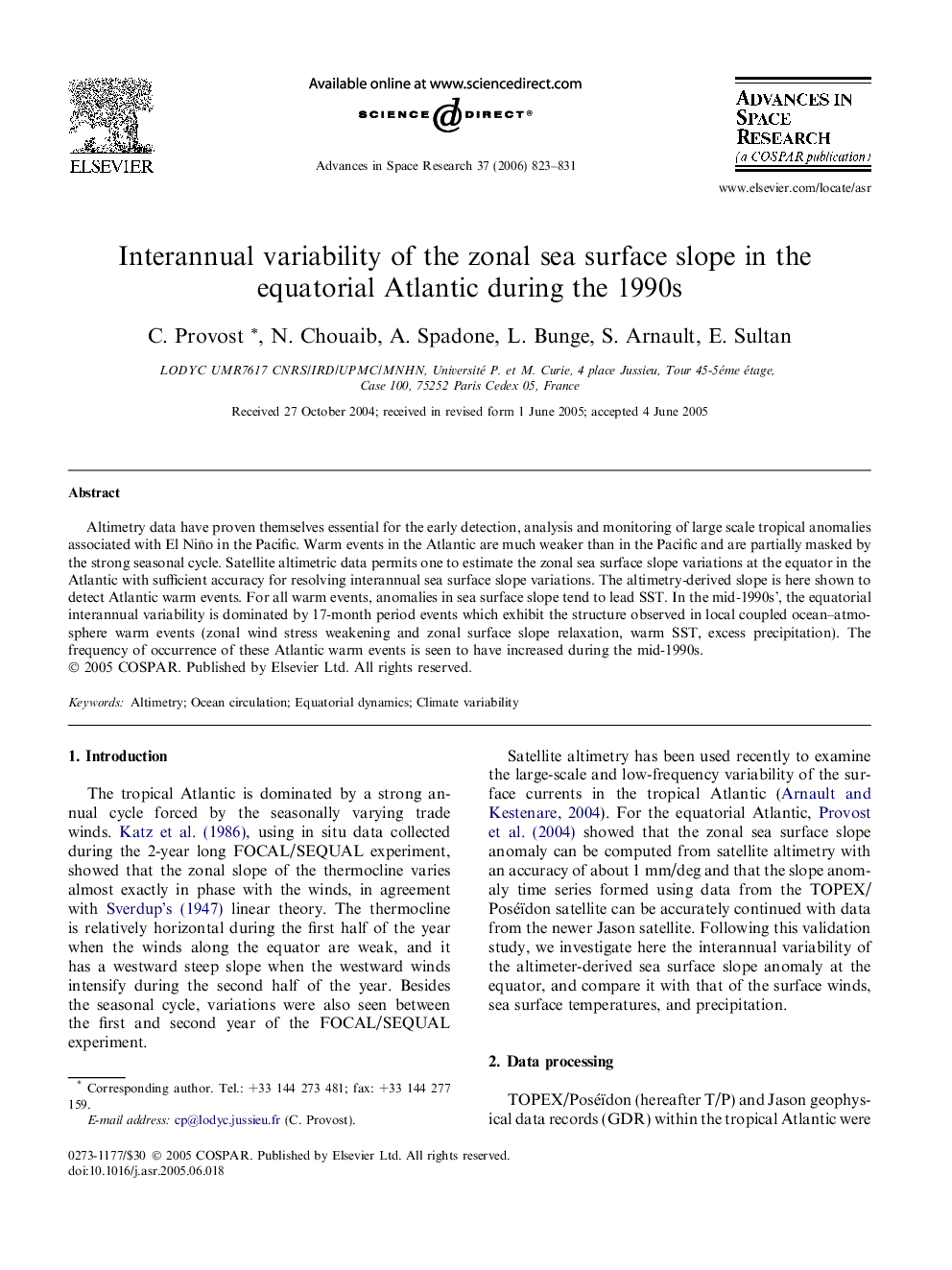| Article ID | Journal | Published Year | Pages | File Type |
|---|---|---|---|---|
| 1769520 | Advances in Space Research | 2006 | 9 Pages |
Abstract
Altimetry data have proven themselves essential for the early detection, analysis and monitoring of large scale tropical anomalies associated with El Niño in the Pacific. Warm events in the Atlantic are much weaker than in the Pacific and are partially masked by the strong seasonal cycle. Satellite altimetric data permits one to estimate the zonal sea surface slope variations at the equator in the Atlantic with sufficient accuracy for resolving interannual sea surface slope variations. The altimetry-derived slope is here shown to detect Atlantic warm events. For all warm events, anomalies in sea surface slope tend to lead SST. In the mid-1990s', the equatorial interannual variability is dominated by 17-month period events which exhibit the structure observed in local coupled ocean-atmosphere warm events (zonal wind stress weakening and zonal surface slope relaxation, warm SST, excess precipitation). The frequency of occurrence of these Atlantic warm events is seen to have increased during the mid-1990s.
Related Topics
Physical Sciences and Engineering
Earth and Planetary Sciences
Space and Planetary Science
Authors
C. Provost, N. Chouaib, A. Spadone, L. Bunge, S. Arnault, E. Sultan,
